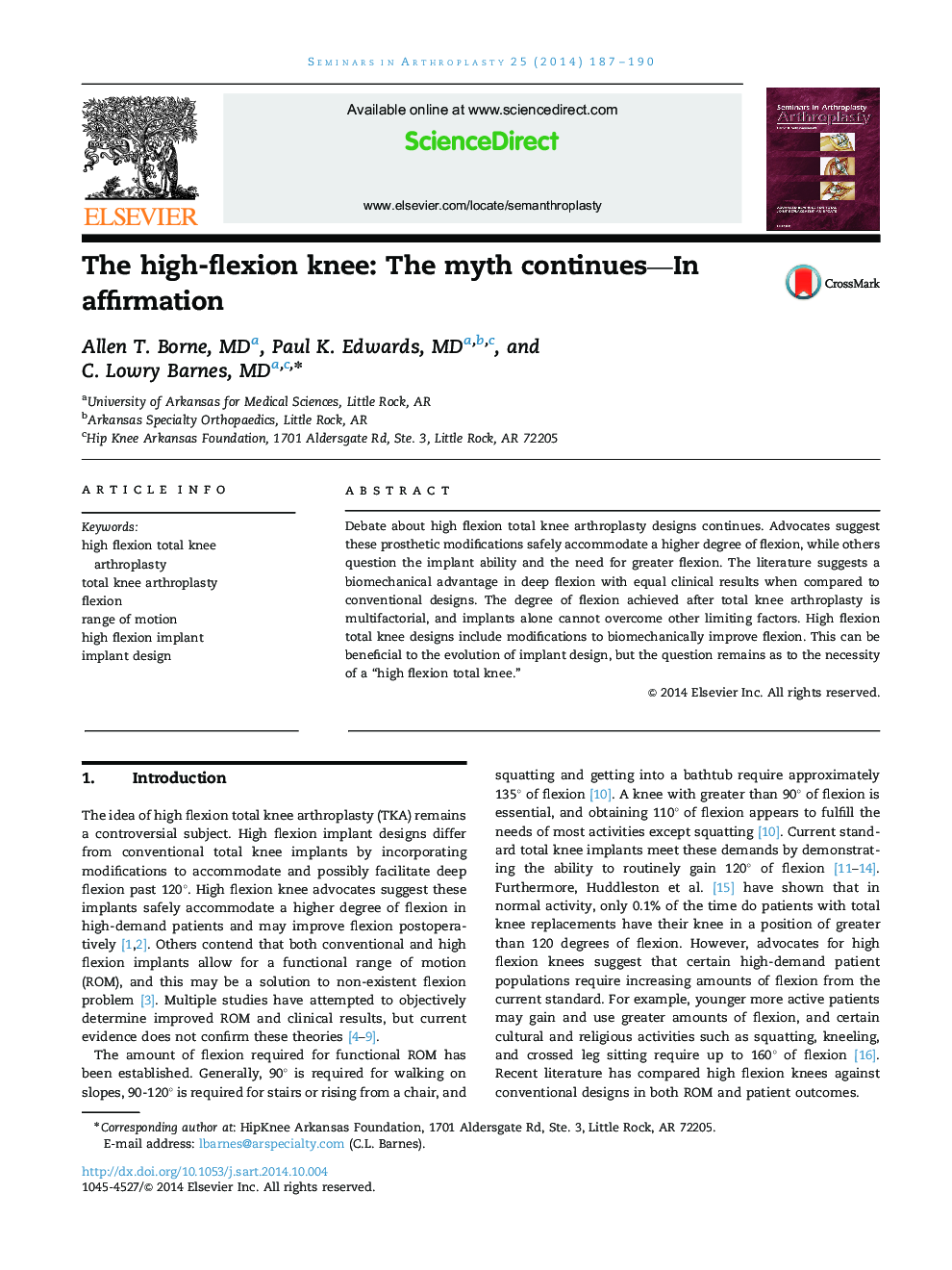| Article ID | Journal | Published Year | Pages | File Type |
|---|---|---|---|---|
| 4093846 | Seminars in Arthroplasty | 2014 | 4 Pages |
Abstract
Debate about high flexion total knee arthroplasty designs continues. Advocates suggest these prosthetic modifications safely accommodate a higher degree of flexion, while others question the implant ability and the need for greater flexion. The literature suggests a biomechanical advantage in deep flexion with equal clinical results when compared to conventional designs. The degree of flexion achieved after total knee arthroplasty is multifactorial, and implants alone cannot overcome other limiting factors. High flexion total knee designs include modifications to biomechanically improve flexion. This can be beneficial to the evolution of implant design, but the question remains as to the necessity of a “high flexion total knee.”
Related Topics
Health Sciences
Medicine and Dentistry
Orthopedics, Sports Medicine and Rehabilitation
Authors
Allen T. Borne, Paul K. Edwards, C. Lowry Barnes,
